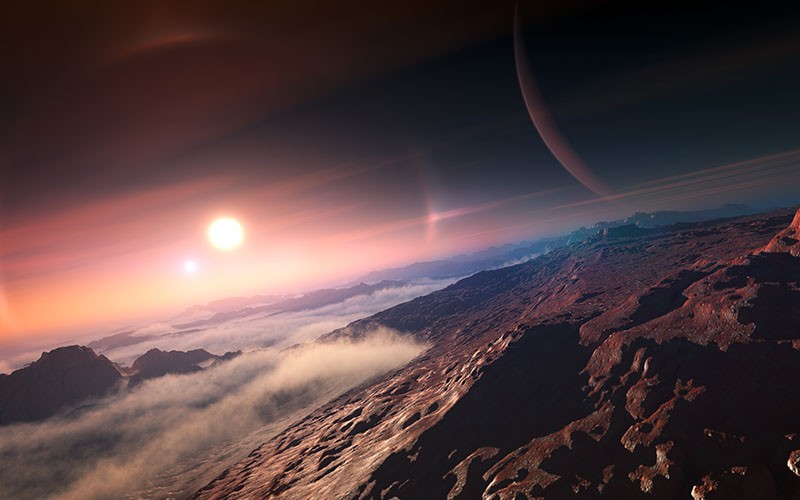A planet formation and evolution model that accounts for two perplexing observations of exoplanets orbiting distant stars has been integrated for the first time in computer simulations by researchers from Rice University and their collaborators. These observations are the rarity of worlds about 1.8 times the size of Earth and the nearly identical size of adjacent plates in hundreds of planetary systems.
The scarcity of exoplanets with a radius that is around 1.8 times that of Earth is one mystery referred to as the "radius valley." Compared to super-Earths with radii around 1.4 times that of Earth and mini-Neptunes with radii roughly 2.5 times that of Earth, NASA's Kepler mission observed planets of this size about 2 to 3 times less frequently.
Case of Missing Planets
"Peas in a Pod," or adjacent planets of a similar size discovered in many planetary systems, is the second enigma. These include TRAPPIST-1 and Kepler-223, which have nearly-harmonious planetary orbits.
"I believe we are the first to explain the radius valley using a model of planet formation and dynamical evolution that self-consistently accounts for multiple constraints of observations," said Rice University's André Izidoro, corresponding author of a study published this week in Astrophysical Journal Letters.
"We're also able to show that a planet-formation model incorporating giant impacts is consistent with the peas-in-a-pod feature of exoplanets," he added in a statement.

The diversity of exoplanets is large — more than 800 planets outside the Solar System have been found to date, with thousands more waiting to be confirmed. Detection methods in this field are steadily and quickly increasing — meaning that many more exoplanets will undoubtedly be discovered in the months and years to come. As an international scientific organisation, the IAU dissociates itself entirely from the commercial practice of selling names of planets, stars or or even "real estate" on other planets or moons. These practices will not be recognised by the IAU and their alternative naming schemes cannot be adopted.
ALSO READ: Are TRAPPIST-1 Exoplanets Habitable? Here's What Experts Say
Computer Simulation
Using a planetary migration model, Izidoro, a Welch Postdoctoral Fellow at Rice University's NASA-funded CLEVER Planets project, and co-authors ran simulations of the first 50 million years of the evolution of planetary systems on a supercomputer.
In the scenario, newborn planets interact with the protoplanetary disks of gas and dust that give origin to them, drawing them nearer to their parent stars and trapping them in resonant orbital chains. Within a few million years, the chains are broken when orbital instability brought on by the disintegration of the protoplanetary disk results in collisions between two or more planets.
Planetary systems that have kept their resonant orbital chains have been studied using planetary migration models. For instance, Izidoro and CLEVER Planets coworkers calculated the greatest amount of disturbance TRAPPIST -1's seven-planet system could have endured during bombardment and yet maintained its harmonic orbital structure in 2021 using a migration model.
Migration of Mini-Neptunes, Super-Earths
According to the findings (per Science Alert), planets come in two "flavors": mini-Neptunes, which are around 2.5 times larger than Earth and are rich in water ice, and super-Earths, which are dry, rocky, and 50 percent larger than Earth. New discoveries, according to Izidoro, appear to validate the findings, which go against the conventional wisdom that both super-Earths and mini-Neptunes are only dry, rocky planets.
Based on these findings, the researchers generated hypotheses that the James Webb Space Telescope of NASA can test. For instance, they postulate that a portion of planets roughly twice the size of Earth will still have their original, hydrogen-rich atmosphere and be abundant in water.
RELATED ARTICLE: Could Humans Live on the Recently Discovered Super-Earth SPECULOOS-2c Planet?
Check out more news and information on Space in Science Times.














